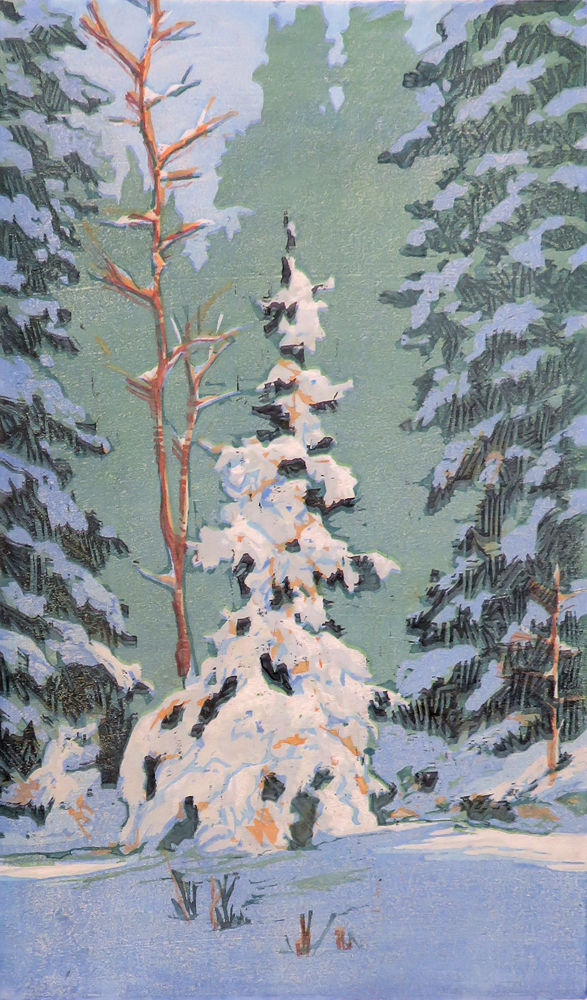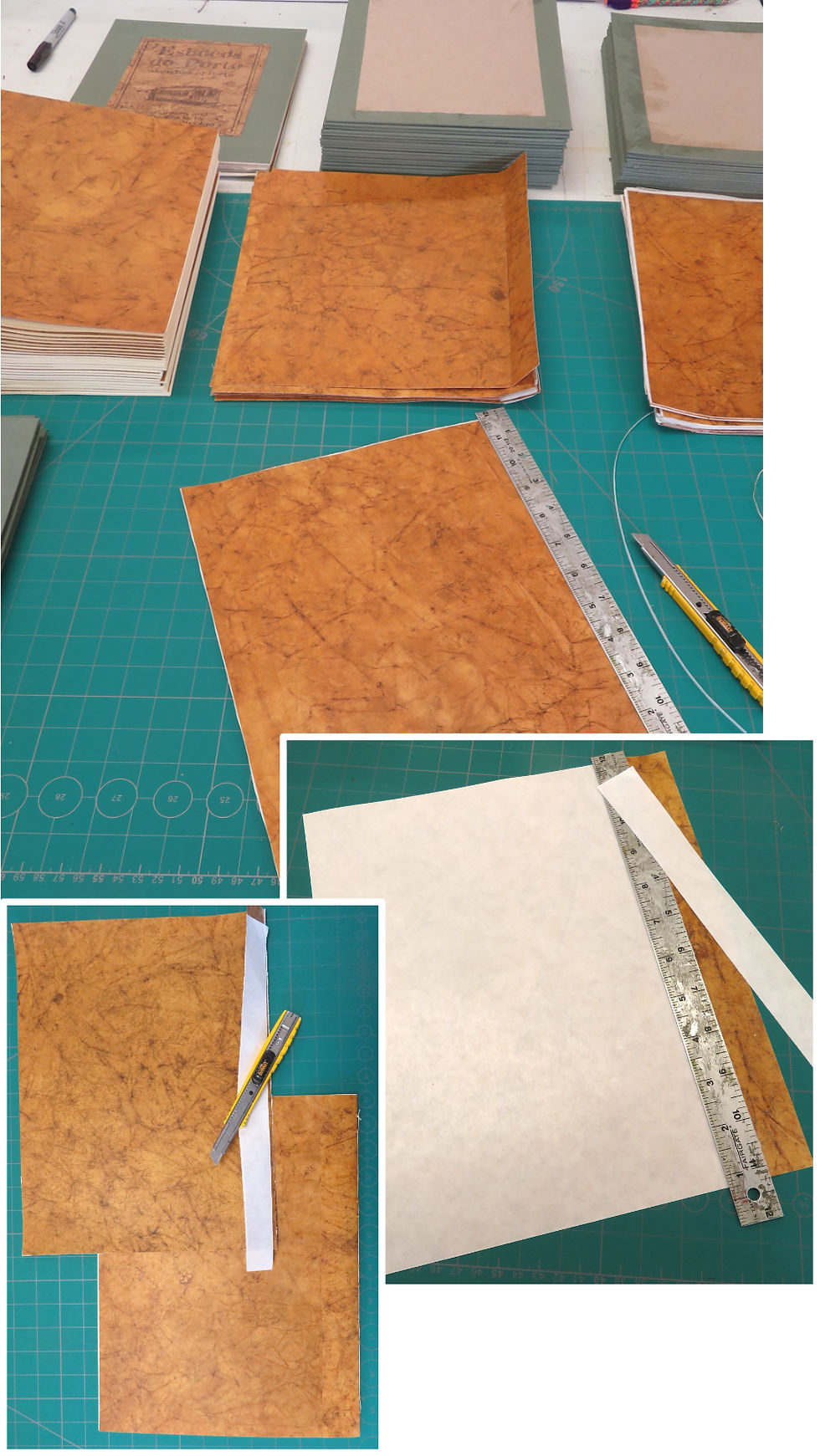Original Print or Giclee?
- DCartpress
- Dec 21, 2023
- 6 min read
A fellow artist proudly announced that he is creating original prints of his watercolors.
“Really?”
“Yeah, I manipulate the image in my photo program and then send it off to the printer.”
“And so, what does it look like?”
“Amazing. You put the giclee next to the watercolor and you can’t even tell them apart.”
“And that’s an original print?”
“Of course, I changed the image on the computer, adjusting some of the colors and shapes before sending it off to the printer. That means it’s an original print since I manipulated the image on the computer.”

So, how does a printmaker that takes pride in hand crafting each print onto paper, respond to that?
I don’t want to discount the skill and knowledge one must have to find one’s way around Photoshop which is a major accomplishment. A quality printed giclee can get expensive to produce. The ink is expensive, the printer even more expensive and it seems to take forever to print a single sheet of paper, maybe twenty minutes. Once printed, the color is wonderfully saturated on the paper. Giclees, if done well, can be hard to tell apart from an actual watercolor or handprint at a distance. Up close, the giclee has a flat surface and not the textural quality of a handprint. But even that is changing as there are 3D printers now that can print an impasto oil on canvas.
I should start off with a few definitions, so we are all on the same page.
Giclee is derived from the French word gicleur, coined in 1991 by printmaker Jack Duganne for fine art digital prints made using inkjet printers. The name was originally applied to fine art prints created on a modified Iris printer in a process invented in the late 1980s. It has since been used widely to mean any fine-art printing, usually archival, printed by inkjet. It is often used by artists, galleries, and print shops for their high quality printing, but is also used generically for art printing of any quality. (Wikipedia)
The quality of today’s giclee print is quite amazing. They are printed on rag content paper, watercolor paper, or canvas. The inks are pigment based as opposed to dye based and so are light fast. The quality of the image depends on the quality of the scan, the quality of the printer, and skill the program operator. So, there is some artistry involved in manipulating the image for best compatibility with the printer.
For the term Original Print, I chose definitions that are from sidewalk art shows as opposed to a definition from NY Graphic Society. I figure the sidewalk art fair definitions will be generic enough to allow some flexibility in the definition. Sidewalk art shows use categories to jury exhibited artwork, giving awards for each category of which printmaking is one.
I have summarized the definitions for printmaking from three large sidewalk art fairs; Cherry Creek Arts Festival, CO; Rittenhouse Square Fine Art Show, PA; and Winter Park Sidewalk Art Festival, FL. The definitions are listed at the end of this article. The recurring definition in each is that printed works are where the artist’s hand manipulated the plates, woodblocks, stones or screens used for printing and that the works are signed and numbered as a limited edition.
I have also included a definition from the Britannica web site for printmaking which is not as precise as the art fair definitions. Another term thrown about is handprint which seems somewhat self-explanatory in that the print was made by hand.

I am motivated to create handprints as there is a joy in working with a tedious process to build an image that conveys my wonder and love of the world around me. Printmaking involves a lot of problem solving, much like life. Working with a familiar set of procedures can be very meditative as well as rewarding, yet, not everything goes as planned. Often, the image takes on a life of its own, developing differently than originally planned. Maybe a color mix was printed in the beginning slightly off in value or chroma from the original concept. That means I am adjusting the subsequent color mixes to meld with that first color, striving to maintain the color harmony conceived in the original sketch.
All this artistic angst can be rewarding. Understanding how to mix color and create color harmony; how to mix the printing ink to the correct viscosity and apply just the right amount of ink to the print matrix (see definition below) is what creates a vibrant image. Even with all of the process frustrations, there is a touch of satisfaction, especially when the process goes as planned.
It is very important to me to be the conduit between my concept and the paper.
Distortions, that I subconsciously create, become a personal interpretation. Imperfections and distortions combine to make the artwork individual to me. As art imitates life, which is not perfect, those imperfections make each print unique. There are always slight variations between prints within an edition. That slight variation is what makes them an original print.
I have had reproductions/giclees made of some of my woodblocks which were installed as room art in some high-end hotels. The giclees were surprisingly accurate in color and were hard to tell apart from the original print from a distance. The reproductions were pencil signed and designated on the numbering as a digital print. I do not want a digital reproduction competing with the original woodblock.
Personally, I would never be satisfied with selling a reproduction as one of my original works. But that is just me, someone who loves the printmaking process; someone who finds the process meditative and the results rewarding.
The “limited edition” sales pitch has been overused and I am leery of using the term because of that. Originally, limited edition meant an edition of 200 or less. In the 1980’s, limited editions of 2,000 to 10,000 were sold as hot investments with built in false appreciation values set by the publishers. Fortunately, that fad faded out. Then came the NFT craze which lasted only a year or so. These fads come and go but original prints have maintained their value and quality over the years and decades. Woodblocks, etchings, stone lithographs and silkscreens continue to hold collectors’ interest even with all the distracting art fads.
I buy art because it has something that I connect with. I think most folks I know do the same. I feel honored that someone is moved enough to purchase one of my works. I want to make sure that I have put all I can into the work. I want to know that it is something that my hands have made. I want to know that the buyer is moved by the image and the image conveys my joy of the world around me.
There are so many different types of art, and I cannot say one style or technique is better than the other. I can say what I like or do not like, but I cannot say that any one method is or is not art. So, all I can say to my friend with his giclees is “That’s great but giclees are not my cup of tea”.

Cherry Creek Arts Festival, Denver, CO Printed works for which the artist’s hand manipulated the plates, stones or screens and which have been properly signed and numbered as a limited edition may be entered in this category. All photogravure, photocopy and/or offset reproductions, will be rejected. Printmakers are required to disclose both their creative and printmaking processes.
Rittenhouse Square Fine Art Show, Philadelphia, PA Printed works for which the artist has manipulated the plates, stones, or screens. These works must be printed by the artist and not an associate or helper. In addition, printmakers are required to disclose their creative process and printing technique. The only exception to this is monotypes, which by definition are one-of-a-kind works. All prints must be signed and numbered as a limited edition.
Winter Park Sidewalk Art Festival, Winter Park FL
Two-dimensional printmaking is a transfer process of producing original art, usually in multiples. Printed original works are hand manipulated by the artist using etching, engraving, silk-screening, stone and plate lithography, linoleum block or woodcut, etc., which have been properly signed and numbered as a limited edition no greater than 250 using archival quality materials*(see description above).
britannica.com/art/printmaking Printmaking, an art form consisting of the production of images, usually on paper but occasionally on fabric, parchment, plastic, or other support, by various techniques of multiplication, under the direct supervision of or by the hand of the artist. Such fine prints, as they are known collectively, are considered original works of art, even though they can exist in multiples.
To the modern reader, the word print might suggest mechanically mass-produced commercial products, such as books, newspapers, and textiles. In this article, however, print refers to the original creation of an artist who, instead of the paintbrush or the chisel, has chosen printmaking tools for expression.
The fine print is a multiple original. Originality is generally associated with uniqueness, but a print is considered original because the artist from the outset intended to create an etching, woodcut, or other graphic work and thus conceived an image within the possibilities and limitations of that technique.
Matrix
In the manufacture of metal type used in letterpress printing, a matrix is the mold used to cast a letter, known as a sort. Matrices for printing types were made of copper. However, in printmaking the matrix is whatever is used, with ink, to hold the image that makes up the print, whether a plate in etching and engraving, a woodblock in woodcut, a screen for serigraph or the stone for lithograph. (Wikipedia)




Changing the colour saturation levels, even changing the colours, is a trivial exercise. I don't believe that changes a scanned watercolour into an original print. If I was sold one as such, I would say that it was misrepresented and want my money back. I do sell inkjet prints, but they are made in the computer. I may use analog images, but the transformative work I do, takes them way past reproductions. I still make drypoint, collagraph and other "hand-pulled"prints too.